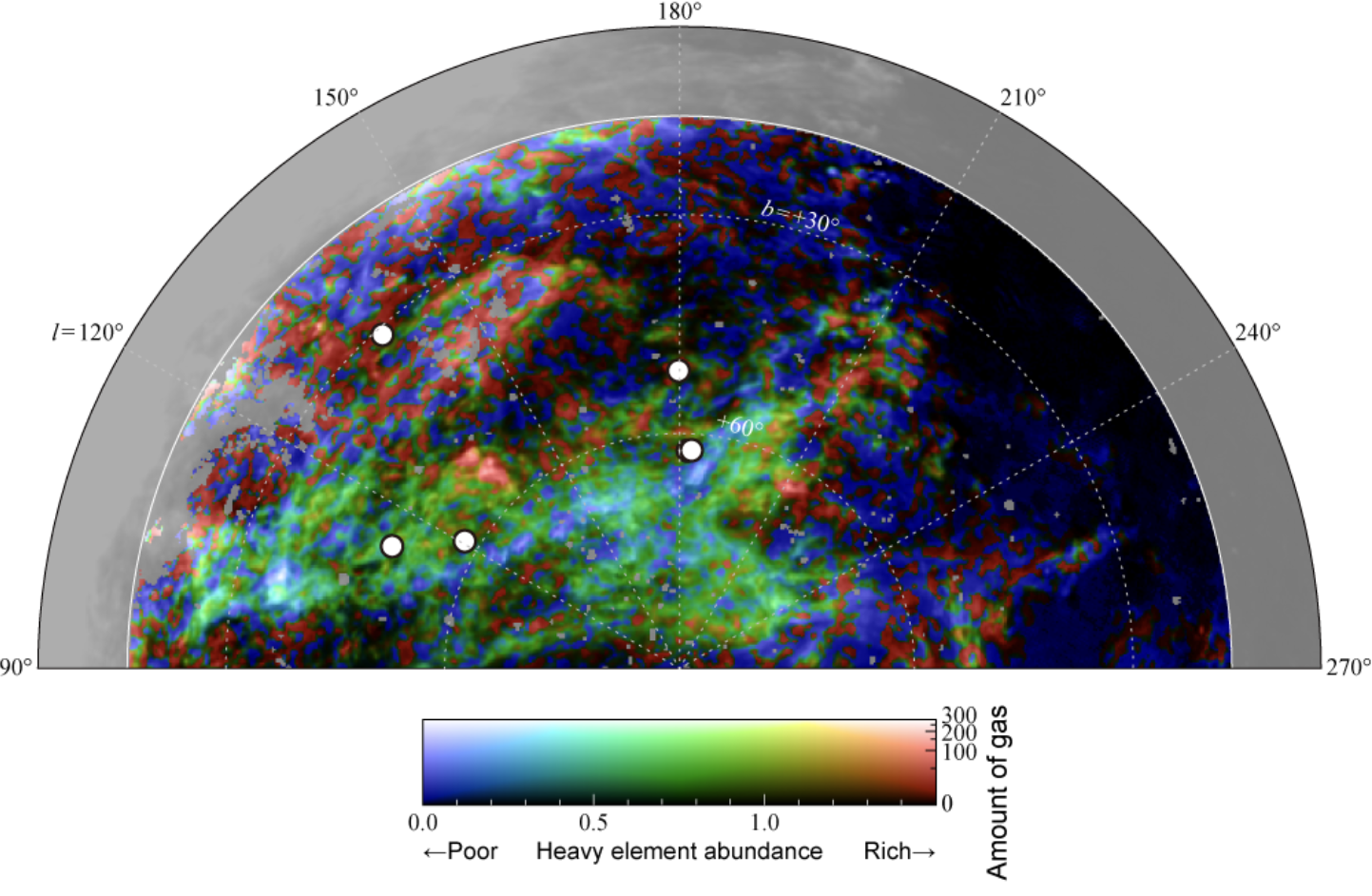Reviewed by Lexie CornerMar 11 2024
A groundbreaking study conducted by researchers at Nagoya University in Japan has challenged a long-held theory about the origins of intermediate-velocity clouds (IVCs).
 Galactic gas shows varying heavy element distribution: blue indicates scarcity, red indicates richness. Heavy elements are less abundant in gas than Galaxy. Image Credit: T. Hayakawa/Y. Fukui, Nagoya University.
Galactic gas shows varying heavy element distribution: blue indicates scarcity, red indicates richness. Heavy elements are less abundant in gas than Galaxy. Image Credit: T. Hayakawa/Y. Fukui, Nagoya University.
Researchers at Nagoya University in Japan found that intergalactic voids (IVCs) contain significantly fewer heavy elements than previously thought. Instead of these materials being continuously recycled, akin to water in a fountain, their study suggests that the particles composing the clouds originated from outside the galaxy. The group published their discoveries in the Monthly Notices of the Royal Astronomical Society.
IVCs, identified by their velocity, are a class of interstellar clouds dispersed throughout the Milky Way at distances spanning thousands of light-years. These gas clouds play a crucial role as sources of elements essential for star formation and the development of planetary systems.
In the traditional model, heavy elements are ejected into the interstellar medium during the demise of stars in supernova events. Subsequently, this material is reintegrated into the gas clouds. According to this model, the heavy elements within IVCs are produced through nuclear fusion reactions and supernova explosions within the galaxy.
Takahiro Hayakawa and Yasuo Fukui from Nagoya University have defined this theory by producing the first precise map showing the distribution of heavy element abundance in gas clouds falling into the Galactic Plane using a dust map by the Planck satellite and a map of radio waves emitted from hydrogen.
The Galactic Plane is a flat structure within the Milky Way galaxy where stars, gas, and dust are concentrated. This region is also known for astronomical phenomena like star formation, as well as the distribution of gas clouds that fall into the plane from the intergalactic medium due to gravity.
Through the examination of intergalactic voids (IVCs) and high-velocity clouds, the researchers were astonished to observe a disparity in the heavy element abundance compared to previous models.
Their findings challenge the conventional Galactic Fountain Model, a theoretical construct that elucidates the galaxy's gas cycling mechanisms.
The Galactic Fountain model describes the cycle of gas being blown out from the Galactic Plane by events like supernova explosions and then falling back, similar to how a fountain continuously reuses water. Researchers often cite the model for explaining IVCs because they believed these clouds to have metallicities similar to those of the stars that supposedly produced them.
Takahiro Hayakawa, Department of Physics, Nagoya University
Metallicities refer to the abundance of elements heavier than helium in astronomical objects like stars and galaxies.
Hayakawa continued, “However, our results demonstrate much lower metallicities of IVCs, suggesting that IVCs are composed of primordial gas that originated from outside our galaxy.”
With the help of the Planck satellite and advanced statistical analyses, the physicists achieved unprecedented precision in their measurements and data analysis.
This research stands to break the 20-year stalemate on the origin of gas clouds falling into the Galaxy. It may solve a long-standing dilemma, the G dwarf problem, which states that old stars of 10 billion years old in the solar vicinity show high metallicity similar to the present-day metallicity of the Milky Way.
Takahiro Hayakawa, Department of Physics, Nagoya University
The scientists anticipate that their study will inspire further investigation into the formation and development of the Galaxy over 10 billion years. This research has far-reaching implications beyond the Milky Way galaxy, providing information about how other galaxies have evolved throughout the universe.
Journal Reference:
Hayakawa, T. & Fukui, Y. (2024) Dust-to-neutral gas ratio of the intermediate- and high-velocity H I clouds derived based on the sub-mm dust emission for the whole sky. Monthly Notices of the Royal Astronomical Society. doi.org/10.1093/mnras/stae302.